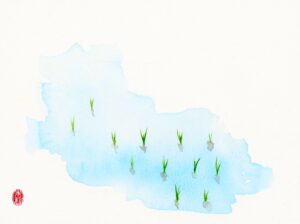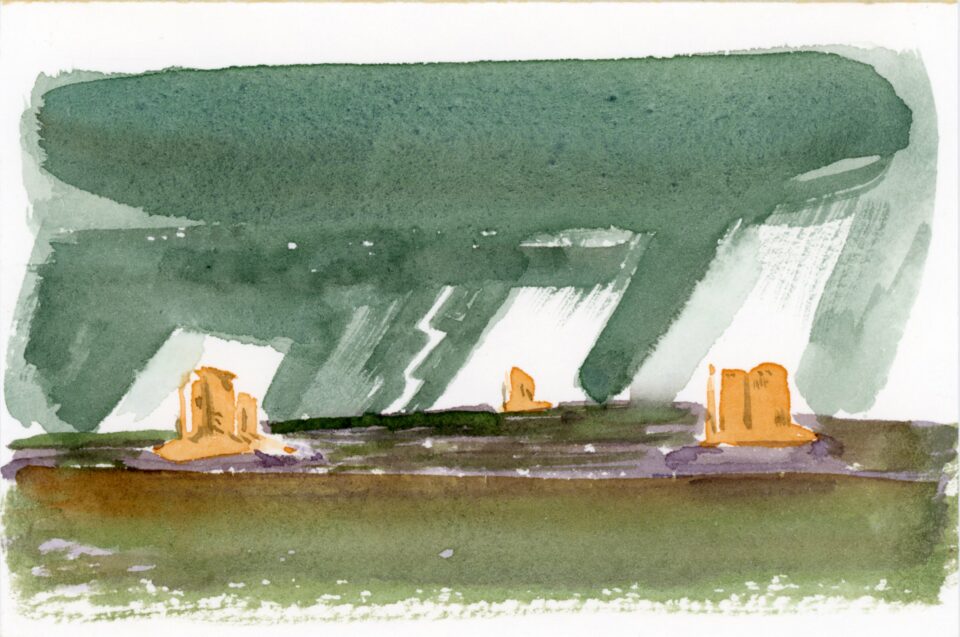
The 72 Seasons - April 2023
In Japan, there are 72 subdivision seasons called the shichijuni kou. The seasons are named after the birds, insects, plants, and weather of each change in nature every five days.
春分 Shunbun (Spring Equinox)
- March 31–April 4: 雷乃発声 kaminari sunawachi koe o hassu (Thunder Starts Again)
清明 Seimei (Pure & Clear)
- April 5–9 :玄鳥至 tsubame kitaru (Swallows Return)
- April 10–14: 鴻雁北 kōgan kaeru (Wild Geese Fly North)
- April 15–19: 虹始見 niji hajimete arawaru (First Rainbows Appear)
穀雨 Kokuu (Grain Rains)
- April 20–24: 葭始生 ashi hajimete shōzu (First Reeds Sprout)
- April 25–29: 霜止出苗 shimo yamite nae izuru (Frost Stops, Rice Grow)
________________________________________________________________________________
Although spring has arrived, the weather is very unstable during this period, with frequent thunderstorms, and even hail and snow may fall when thunder begins to roar in the distant sky. In traditional Japanese culture, thunder is the god of thunder beating a drum. The god of thunder is red in color, clothed in tiger prints, has a fierce look, and has a very high status in Japanese mythology.
Seimei describes the purity and vitality of all things. It is a season when flowers bloom, butterflies dance, and the sky is bright, it is the most comfortable time of the year. Swallows begin to migrate by sensing the length of daylight, and swallows that spend their winters on the warm Southeast Asian islands begin to cross the ocean to Japan. In Japan, there is an old saying: "when swallows nest in a house, they bring happiness to the house". The black swallows are especially lovely as they fly between the fallen cherry blossoms and the green willows. In contrast to the swallows, the geese, which like the cold, end their winter stay in Japan and begin to return to Siberia. The sight of geese flying in large flocks gives haiku and Japanese poetry many inspirations. As the rain increased, the air became more humid, and beautiful rainbows appeared in the air again.
Kokuu means rain nourishes the grains, the changeable spring weather settles down at this time of year. The rain falls on the newly planted grains so that they can store a lot of water and nutrients and grow strong. Spring flowers such as peonies and tulips bloom one after another.
From April 20, the reeds begin to sprout. The reed is considered to be a representative of strength. No matter how many times the reeds fall down, they will not break because their stems are flexible and they will continue to grow straight up again. This resilient spirit is revered by the Japanese people. After the frost, the bright green rice grows rapidly at the end of April. The rice starts to burst out with green shoots. Rice has been a main food in Japan since the Nara period, and is also central to the food culture, with various rice dishes passed down as traditional foods. The process of growing rice is very demanding and difficult for farmers.
________________________________________________________________________________
雷乃発声 kaminari sunawachi koe o hassu (Thunder Starts Again)

玄鳥至 tsubame kitaru (Swallows Return)
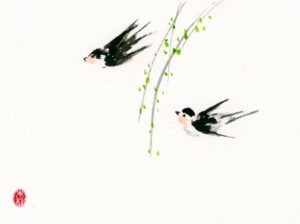
鴻雁北 kōgan kaeru (Wild Geese Fly North)
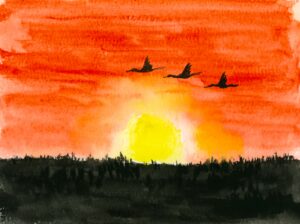
虹始見 niji hajimete arawaru (First Rainbows Appear)

葭始生 ashi hajimete shōzu (First Reeds Sprout)
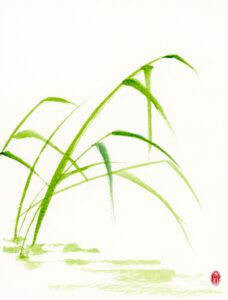
霜止出苗 shimo yamite nae izuru (Frost Stops, Rice Grow)
